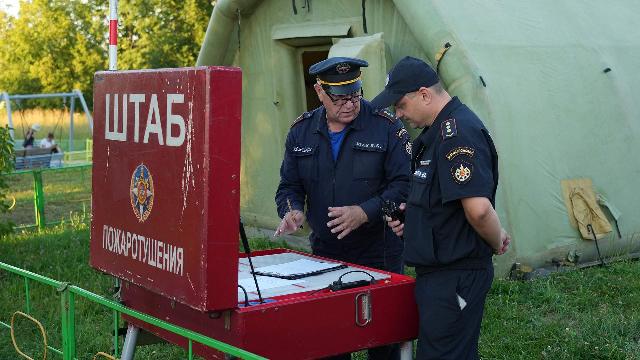The Superjet control program caused the crash of the aircraft due to incorrectly installed angle of attack sensors, sources of Izvestia believe
The preliminary version of the Gazprom Avia Superjet crash near Kolomna is the incorrect installation of two of the four angle of attack sensors during maintenance with a deviation of about five degrees. Sources familiar with the situation told Izvestia about this. As a result, during the climb, unreliable readings from the sensors led to the untimely activation of the protection system that protects the aircraft from entering stall modes, and the system itself sent the SSJ-100 to the ground. The pilots, as explained to Izvestia in the industry, did not have time to recognize this failure and exit the dive, avoiding a collision with the ground.
Violated the operation
One of the technicians of the Lukhovitsky Aircraft Factory (a branch of the UAC), in violation of the operating instructions, installed two of the four angle of attack sensors with a deviation of about five degrees. As a result, when climbing, unreliable readings from them led to the untimely activation of the protection system that protects the aircraft from entering stall modes, which itself sent the Superjet into the ground. Sources familiar with the situation told Izvestia about this.
As explained to the editorial staff in the industry, the pilots did not have time to recognize this failure and exit the dive, avoiding a collision with the ground.
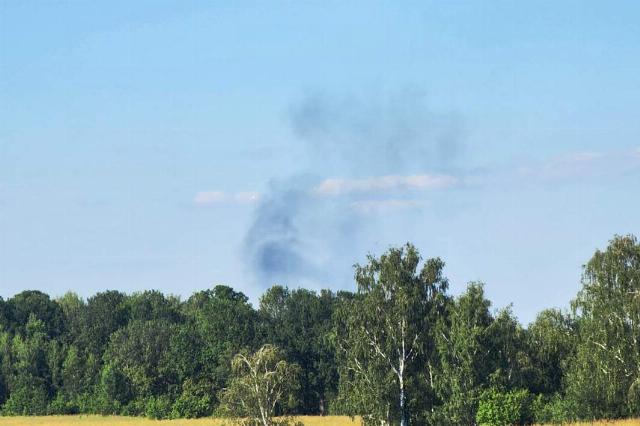
Smoke at the crash site of the Superjet aircraft in Kolomenskoye district
Image source: Photo: IZVESTIA/Dmitry Korotaev
— If an error is made during installation, they (angle of attack sensors. — Izvestia) they transmit incorrect data to the management system. Figuratively speaking, electronics can assume that the plane is on the rise, but in fact it is flying towards the ground. Previously, this is about the picture that emerges," said an interlocutor familiar with the situation.
He stressed that before departure, the ship underwent routine maintenance, and the flight was of a test nature. Now it is being found out at what stage the error could have occurred and who exactly carried out this work. According to the source, official conclusions will be made after the investigation, but there is already reason to believe that the cause of the disaster was a human factor.
— The Superjet is a good aircraft, in the entire history of its flights there has not been a single case of a vessel of this type crashing due to technical condition, — the interlocutor added.
Izvestia's help
The angle of attack sensor is a device with a weather vane flag located on the fuselage outside the aircraft. There are four of them on the Superjet, two on each side. They are designed to determine the so—called angle of attack - the angle between the longitudinal axis of the aircraft and the velocity vector.
The representative of Rostec urged to wait for the conclusions of the official investigation. The KLA did not comment on the version of the disaster. Izvestia also sent requests to the Ministry of Transport and the IAC.
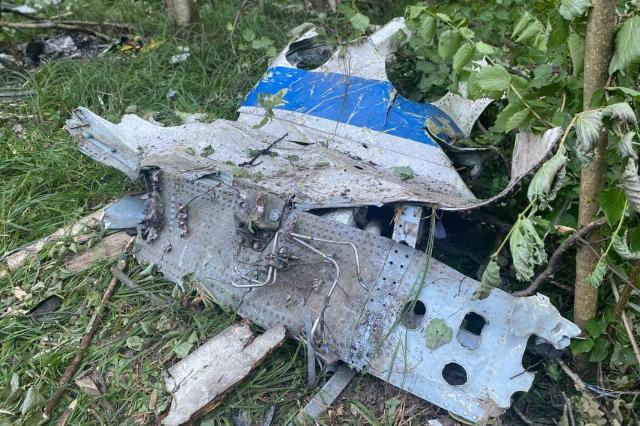
Photo: IZVESTIA
Image source: iz.ru
On July 12, a Sukhoi Superjet 100 crashed in the Moscow region. There were no passengers on board the aircraft, there were three crew members there. They died. The airliner belonged to Gazprom Avia and was launched in 2014. The plane took off from the Lukhovitsy factory after repairs and was heading to Vnukovo Airport. The failure of both engines was considered as versions of the crash. Upon the fact of the incident, a criminal case was opened on violation of the safety of air transport operation (Part 3 of Article 263 of the Criminal Code of the Russian Federation). The IAC has formed a commission to investigate the disaster.
The center for Maintenance and Repair of Civil Aviation Aircraft (MRO) at the Lukhovitsky plant, whose employees were engaged in the maintenance of the SSJ-100, has been operating since 2020, the number of staff is 81 people. During this time, the center performed a heavy form of maintenance (C-check) on 25 Superjet of various airlines, including Rossiya, Gazprom Avia and SLO Rossiya. There were no comments from the operators.
They demanded order
Two days after the disaster, the operational situation center of the Superjet developer, Yakovlev PJSC, issued an information letter on the need for strict compliance with the operating instructions when replacing angle of attack sensors with SSJ. Izvestia got acquainted with the relevant document on July 15.
In it, the manufacturer calls for replacing the angle of attack sensors to pay special attention to the combination of marks and holes on the lining and on the fuselage from which it was removed. The information letter also recommends double quality control and completeness of work. In addition, it is necessary to exclude the simultaneous replacement of two sensors by one specialist.
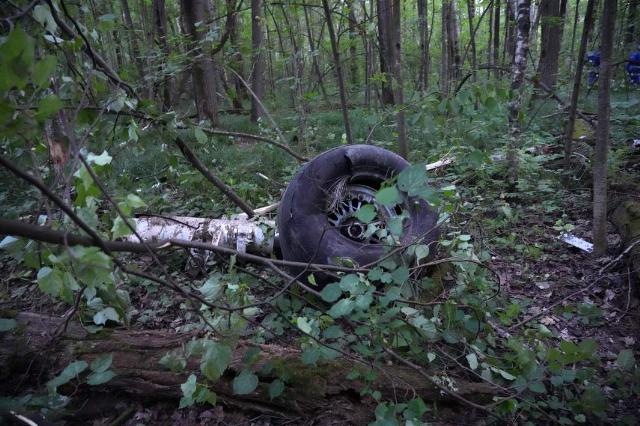
Landing gear at the crash site of the Superjet aircraft
Image source: Photo: IZVESTIA/Dmitry Korotaev
According to a source close to the Ministry of Transport, the Superjet technical operation manual (developer's document) does not contain requirements for double control of the correctness of replacing angle of attack sensors, as well as to exclude cases of simultaneous performance of these works on two or more sensors by one specialist. PJSC Yakovlev issued them only two days after the disaster and so far only in the form of recommendations.
They threw up versions
The reason cannot be only in one technique, it is in the system itself, according to the interlocutor of Izvestia, who is directly involved in maintaining the airworthiness of the Superjet. According to him, the replacement of sensors, according to the requirements of the European Aviation Safety Agency (EASA), must be carried out either under the supervision of another specialist or by two technicians in order to eliminate errors. At the same time, there are no such requirements in the Russian federal aviation regulations, he pointed out. They are either prescribed by the maintenance organizations themselves (for example, as large providers who have managed to work under EASA), or they do not implement such a thing at all, since legislation does not require it.
— Experts always do "foolproof". Unfortunately, not all elements on the Superjet have such protection," said Andrey Patrakov, aviation expert, founder of the flight safety and certification service RunAvia. — The speed sensor is foreign there, but the layout was made by domestic designers. The sensors are placed in a special pad, which can also be attached incorrectly. This results in a double risk of error.
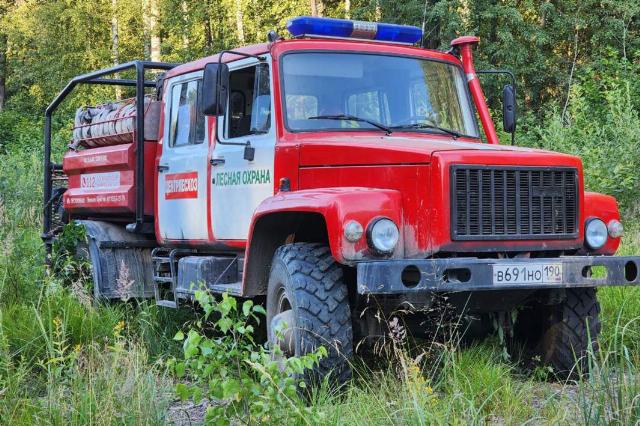
Forest guard vehicles at the crash site of the Superjet plane
Image source: Photo: IZVESTIA
According to him, the problem was solved with the help of red drawings, which eventually confused everyone even more. For comparison, it is impossible to install sensors incorrectly on a Boeing 737 or an Airbus A320 due to the shape of the part, the expert noted.
— When the SSJ-100 was designed, a wonderful team of engineers gathered, the elite of the domestic aircraft industry, but the work was supervised by the Sukhoi Design Bureau, relatively speaking, by military engineers, and they have a different approach to design. There were a lot of disputes, but for some reason the leadership mostly accepted the point of view of military specialists," Andrei Patrakov noted.
The very admission of the aircraft to flight raises questions, he added.
— After a severe form of maintenance, which is carried out once every 10 years, it is mandatory to fly over the equipment to check the operability of all systems. Test pilots should be sitting there, ready for an abnormal development of events. And at the helm were civilian pilots with little experience who worked on charters for the transportation of shift workers. They could not cope with the difficulties encountered in piloting, the expert believes.
The Superjet has a system that corrects crew errors. She uses the readings of those sensors and perfectly secures the pilots.
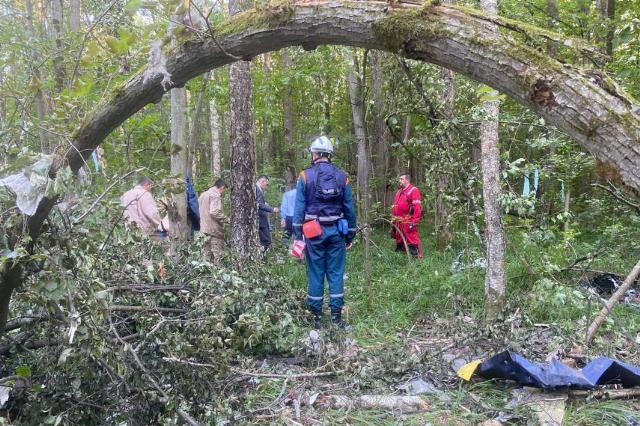
Photo: IZVESTIA
Image source: iz.ru
— But if the sensors give incorrect information, the system considers it reliable and blocks the actions of the pilots, — added Andrey Patrakov. — In the case under consideration, two of the four sensors were working incorrectly. In this case, the program chooses which information to believe. As a result, the computer probably began to interfere with the actions of the pilots.
In this case, only disabling the program helps, but civilian pilots did not know how to do this, the expert noted.
— The graphs show how the pilots tried to straighten the plane and in the first round they succeeded, the program considered their actions wrong and sent the plane back to the ground, adjusting the controls in such a way as to prevent the pilots from straightening the plane, — said Andrey Patrakov.
According to him, a similar situation occurred with Boeing 737 MAX 8 aircraft in 2018-2019. Then two airliners crashed due to erroneous actions of the MCAS control system, which also lowered the nose of the aircraft to prevent a non-existent stall.
According to civil aviation pilot Andrey Litvinov, the system works in such a way that it puts the aircraft into dive mode, and it no longer matters how the pilot controls the joystick. Until the system regains speed, it sort of isolates the person. The pilot cannot quickly recognize the problem, and low altitude also affects the situation.
Photo: IZVESTIA/Dmitry Korotaev
Image source: iz.ru
— I always told young pilots about this: "Don't get hung up on the instruments, turn off the autopilot and pilot, especially since visibility is good during the day, the engines are running," he noted.
Most likely, the pilots on the SSJ-100 fell into a stupor and lost control, Andrei Litvinov added.
— The Commission for the Investigation of aviation accidents and investigators of the prosecutor's office are carrying out activities, including those related to studying the quality of work performed during the maintenance of this aircraft, as well as studying how such work is organized in general, — Oleg Panteleev, executive director of the Aviport agency, told Izvestia. — If cases of non-compliance with established standards are identified during inspections, organizations are required to eliminate deficiencies. In critical cases, it is possible to suspend the activities of organizations in certain areas, up to the revocation of permits without the right to restore them.
What decisions the aviation authorities will make in this case will depend on what they find during inspections, the expert believes.
A source in the Ministry of Transport believes that the Center for Maintenance and Repair of civil aircraft at the Lukhovitsky Aircraft Plant may lose the certificate of the maintenance organization after this disaster.
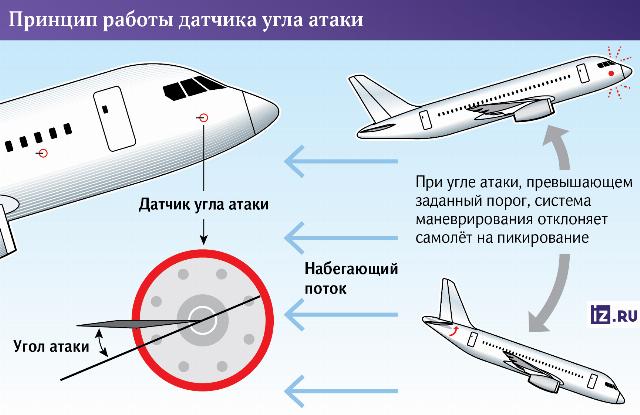
Irina Tsyruleva
Stanislav Fedorov
Vladimir Gavrilov
